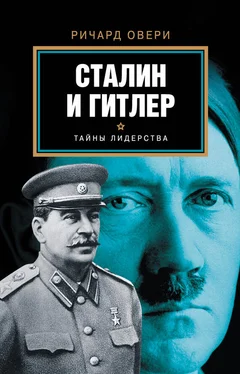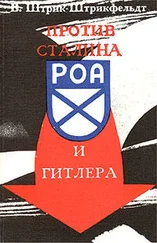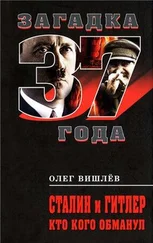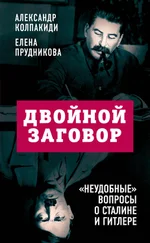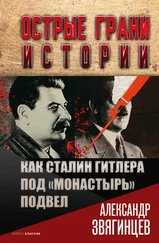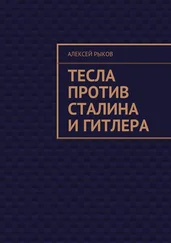Müller-Dietz, H. Recht im Nationalsozialismus (Baden-Baden, 2000).
Munting, R. The Economic Development of the USSR (London, 1982).
Naiman, E. Sex in Public: The Incarnation of Early Soviet Ideology (Princeton, NJ, 1997).
Naimark, N. and Gibianski, L. (eds) The Establishment of Communist Regimes in Eastern Europe 1944–1949 (Boulder, Colo.,
1997).
Nation, R. C. Black Earth, Red Star: A History of Soviet Security Policy 1917–1991 (Ithaca, NY, 1992).
Nekrich, A, M. Pariahs, Partners, Predators: German-Soviet Relations 1922–1941 (New York, 1997).
Neurohr, J. F. Der Mythos vom Dritten Reich (Stuttgart, 1957).
Nevezhin, V. A. The Pact with Germany and the Idea of an “Offensive War” (1939–1941)’5 Journal of Slavic Military Studies, 8
(1995), pp. 811–33.
Nevin, T. Ernst Jünger and Germany: Into the Abyss 1914–1945 (London, 1997).
Nicholls, A. Freedom with Responsibility: The Social Market Economy in Germany 1918–1963 (Oxford, 1994).
Nichols, T. M. The Sacred Cause: Civil-Military Confl ict over Soviet National Security, 1917–1992 (Ithaca, NY, 1993).
Nicosia, F. R. and Stokes, L. D. (eds) Germans Against Nazism: Nonconformity, Opposition and Resistance in the Third Reich
(New York, 1990).
Nove, A. An Economic History of the USSR (3rd edn, London, 1992.).
Nove, A. ‘The peasantry in World War II’, in S. Linz (ed.) The Impact of World War II on the Soviet Union (Totowa, NJ, 1985), pp. 79–90.
Nove, A. Stalinism and After (London, 1975).
Nove, A. (ed.) The Stalin Phenomenon (London, 1993).
Nove, A. Terror Victims – Is the Evidence Complete?’ Europe – Asia Studies, 46 (1994), pp. 535–7.
O’Neill, R. J. The German Army and the Nazi Tarty 1933–1939 (London, 1966).
Orlow, D. The History of the Nazi Party (2 vols, Newton Abbot, 1973).
Orth, K. Das System der ns Konzentrationslager: Eine politische Organisationsgeschichte (Hamburg, 1999).
Orth, K. ‘Gab es eine Lagergesellschaft? “Kriminelle” und politische Häftlinge im Konzentrationslager’, in N. Frei, S. Steinbacher and
B. Wagner (eds) Ausbeutung, Vernichtung, Öffentlichkeit: neue Studien zur nationalsozialistischen Lagerpolitik (Munich,
2000), pp. 109–33.
Osokina, E. Our Daily Bread: Socialist Distribution and the Art of Survival in Stalin’s Russia, 1927–1941 (New York, 2001).
Otto, R. Wehrmacht, Gestapo und sowjetische Kriegsgefangene im deutschen Reichsgebiet 1941/42 (Munich, 1998).
Oved, Y. The Future Society according to Kropotkin’, Cahiers du monde russe, 33 (1992), pp. 303–20.
Overy, R. J. The Four-Year Plan’, in T. Gourvish (ed.) European Yearbook of Business History: Number 3 (Aldershot, 2000), pp.
87–106.
Overy, R. J. ‘Germany and the Munich Crisis. A Mutilated Victory?’ Diplomacy and Statecraft, 10 (2000), pp. 191–215.
Overy, R. J. Interrogations: the Nazi Elite in Allied Hands, 1945 (London, 2001).
Overy, R. J. The Nazi Economic Recovery 1932–1938 (2nd edn, Cambridge, 1996).
Overy, R. J. Russia’s War (London, 1998).
Overy, R. J. War and Economy in the Third Reich (Oxford, 1994).
Overy, R. J. Why the Allies Won (London, 1995).
Overy, R. J., Ten Cate, J. and Otto, G. (eds) Die Neuordnung Europas: NS-Wirtschaftspolitik in den besetzten Gebieten (Berlin, 1997).
Pabst, M. Staatsterrorismus: Theorie und Praxis kommunistischer Herrschaft (Graz, 1997).
Padfi eld, P. Himmler: Reichsführer SS (London, 1990).
Panayi, P. (ed.) Weimar and Nazi Germany: Continuities and Discontinuities (London, 2001).
Parrish, M. The Downfall of the “Iron Commissar”: N. I. Ezhov 1938–40’, Journal of Slavic Military Studies, 14 (2001), pp. 71–104.
Parrish, M. The Lesser Terror: Soviet State Security 1939–1953 (Westport, Conn., 1996).
Paul, G. (ed.) Die Täter der Shoah: fanatische Nationalsozialisten oder ganz normale Deutsche? (Munich, 2002).
Paul, G. and Mallmann, K.-M. (eds) Die Gestapo – Mythos und Realität (Darmstadt, 1995).
Paul, G. and Mallmann, K.-M. (eds) Die Gestapo im Zweiten Weltkrieg: Heimatfront und besetztes Europa (Darmstadt, 2000).
Pavlov, D. V. Leningrad 1941: the Blockade (Chicago, 1965).
Pavlova, I. V. The Machinery of Political Power in the USSR of the 20s and 30s’, Voprosii istorii, 11–12 (1998), pp. 49–67.
Pavlova, I. V. The Strength and Weakness of Stalin’s Power’, in N. Rosenfeldt, B. Jensen and E. Kulavig (eds) Mechanisms of Power
in the Soviet Union (London, 2000), pp. 23–39.
Peris, D. ‘Commissars in Red Cassocks: Former Priests in the League of the Militant Godless’, Slavic Review, 54 (1995), pp. 342–64.
Peris, D. Storming the Heavens: the Soviet League of the Militant Godless (Ithaca, NY, 1998).
Perrie, M. ‘Nationalism and History: the Cult of Ivan the Terrible in Stalin’s Russia’, in G. Hosking and R. Service (eds) Russian
Nationalism Past and Present (London, 1998), pp. 107–27.
Perz, B. Projekt Quarz: Steyr-Daimler-Puch und das Konzentrationslager Melk (Vienna, 1991).
Peschanski, D. La France des Camps: Vinternement 1938–1946 (Paris, 2002).
Petrone, K. Life Has Become More Joyous, Comrades: Celebrations in the Time of Stalin (Bloomington, Ind., 2000).
Petropoulos, J. The Faustian Bargain: the Art World in Nazi Germany (London, 2000).
Petsch, J. ‘Architektur und Städtebau im Dritten Reich – Anspruch und Wirklichkeit’, in D. Peukert and J. Reulecke (eds) Die Reihen
fast geschlossen: Beiträge zur Geschichte des Alltags unterm Nationalsozialismus (Wuppertal, 1981).
Peukert, D. The Genesis of the “Final Solution” from the Spirit of Science’, in D. Crew (ed.) Nazism and German Society 1933–1945
(London, 1994), pp. 274–99.
Peukert, D. Inside Nazi Germany: Conformity, Opposition and Racism in Everyday Life (London, 1987).
Pfaff, D. Die Entwicklung der sowjetischen Rechtslehre (Cologne, 1968).
Pinchuk, B.-C. Shtetl Jews under Soviet Rule: Eastern Poland on the Eve of the Holocaust (London, 1990).
Pine, L. ‘Creating Conformity: the Training of Girls in the Bund Deutscher Mädel’, European History Quarterly, 33 (2003), pp.
367–85.
Pine, L. Nazi Family Policy 1933–1945 (Oxford, 1997).
Pingel, F. Häftlinge unter SS-Herrschaft: Widerstand, Selbstbehauptung und Vernichtung im Konzentrationslager (Hamburg,
1978).
Pini, U. Erotik im Dritten Reich (Munich, 1992).
Pinkus, B. The Jews of the Soviet Union: the History of a National Minority (Cambridge, 1993).
Pinkus, B. ‘La participation des minorities nationals extra-territoriales à la vie politique et publique de l’Union Soviétique, 1917–1939’,
Cahiers du monde russe, 36 (1995), pp. 297–318.
Pinnow, K. ‘Cutting and Counting: Forensic Medicine as a Science of Society in Bolshevik Russia, 1920–29’, in D. Hoffmann and Y.
Kotsonis (eds) Russian Modernity: Politics, Knowledge, Practices (London, 2000).
Pisiotis, A. K. ‘Images of Hate in the Art of War’, in R. Stites Culture and Entertainment in Wartime Russia (Bloomington, Ind.,
1995), pp. 141–56.
Plaggenborg, S. ‘Gewalt und Militanz in Sowjetrussland 1919–1930’, Jahrbücher für die Geschichte Osteuropas, 44 (1996), pp.
409–30.
Platt, K. E. and Brandenberger, D. ‘Terribly Romantic, Terribly Progressive, or Terribly Tragic: Rehabilitating Ivan IV under I. V.
Stalin’, Russian Review, 58 (1999), pp. 635–54.
Plöckinger, O. ‘Rhetorik, Propaganda und Masse in Hitlers Mein Kampf, in J. Kopperschmidt (ed.) Hitler als Redner (Munich, 2003),
pp. 115–42.
Plumper, J. ‘Abolishing Ambiguity: Soviet Censorship Practices in the 1930s’, Russian Review, 60 (2001), pp. 526–44.
Читать дальше
Конец ознакомительного отрывка
Купить книгу
